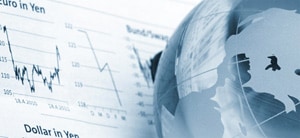THE STARS ALIGN
By Rebecca Brace
As treasurers seek to optimize liquidity and working capital, cash and trade solutions are increasingly in sync.

Treasury and trade used to be two separate disciplines. But in recent years there has been a convergence of the two, both in terms of how corporations manage their processes internally and in terms of the solutions provided by their banks. This convergence has been driven by a number of factors. First, there is the evolving role of the treasurer. “Treasury functions within companies are increasingly responsible for managing working capital and the associated metrics,” comments Jon Richman, global product head, trade and financial supply chain and North America trade sales at Deutsche Bank. “In addition, coming out of the financial crisis, it’s become more of a treasury responsibility to make sure they have a comprehensive toolkit for managing liquidity and risk.”
What does the convergence of treasury and trade mean in practical terms? Naveed Sultan, global head of treasury and trade solutions, Citi Transaction Services, notes: “From a bank perspective, this has meant looking at existing processes and offerings and leveraging newer technologies, such as mobile, to move the entire process away from paper. This provides a digital-enabled toolset [for] greater visibility in real time and allows [treasurers] to make decisions both faster and smarter.”
Solutions such as supply chain finance and e-invoicing combine the characteristics of treasury and trade by offering the company cash management benefits while also potentially enhancing relationships with external suppliers. In order to offer and make use of these solutions, banks and corporations have had to break down internal silos. “As part of working capital optimization, treasurers need to look at the supply chain as well and join forces with the procurement area,” observes Matthias Heiden, senior vice president and head of global treasury at SAP.
The convergence of treasury and trade is an established trend, but there’s more to come. Further convergence is in the cards, with banks looking to bring in areas such as FX. “The propositions are getting more integrated,” says Richman. “They’re integrating with FX because clients’ trading partners wish to receive currency, which is not necessarily the home currency of the client. They’re also integrating with payment and liquidity management services on a single platform.”
Sultan agrees. “The beauty of this integrated approach allows banks, in particular the global ones, to leverage the network and deliver solutions in a more cost-effective way,” he says. “This also creates a ‘win-win’ situation for both clients and banks––clients get better FX rates through the global network and banks get increased FX volumes.”
Bruce Proctor, global head of trade and supply chain finance at Bank of America Merrill Lynch, says that the idea of corporates self-funding a supply chain finance facility is relatively new. “Instead of the bank providing the funding for those transactions, corporations––which are in many cases sitting on a lot of cash and which don’t have many attractive investment alternatives––could effectively choose to purchase their own receivables,” he explains.
This can, Proctor adds, enable companies to “achieve the desired result for suppliers while also giving the corporation the ability to bring a liquidity solution into the process as well.”
The convergence of treasury and trade—and the further integration of other pieces of global working capital management—has been widely discussed, and this trend looks like it has a fair amount of mileage left.




